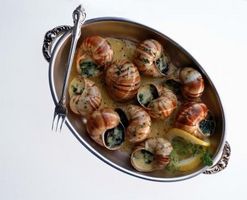
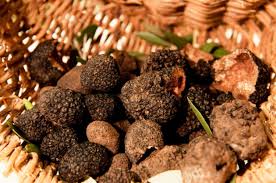

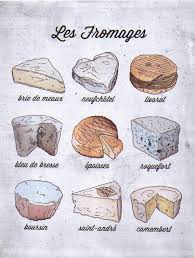


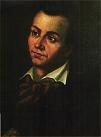

















TLW's Chefscope™ (Chef Historyscope) |
By T.L. Winslow (TLW), the Historyscoper™ |
© Copyright by T.L. Winslow. All Rights Reserved. |
Original Pub. Date: Dec. 31, 2014. Last Update: June 19, 2025. |


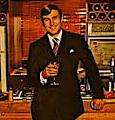

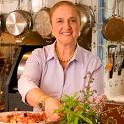


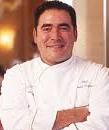


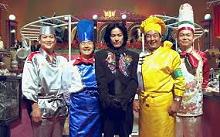

Westerners are not only known as history ignoramuses, but double dumbass history ignoramuses when it comes to cooking and chef history. Since I'm the one-and-only Historyscoper (tm), let me quickly bring you up to speed before you dive into my Master Historyscope.
Every mother can cook for her family, but when a cook goes commercial he/she becomes a chef. This historyscope concentrates on French chefs, French cuisine, and writers on Gastronomy, "the art of regulating the stomach".
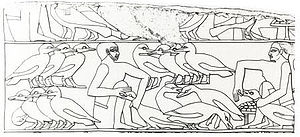
About 2500 B.C.E. the Egyptians begin the practice of producing foie gras by force-feeding geese and other birds.

About 700 B.C.E. Greek poet Homer (b. -750) dies in Chios, leaving The Iliad (24 vols.), about the 10-year Trojan War; "Sing, O goddess, the anger of Achilles, son of Peleus, that brought countless ills upon the Achaeans. Many a brave soul did it send hurrying down to Hades, and many a hero did it yield a prey to dogs and vultures, for so were the counsels of Jove fulfilled from the day on which the son of Atreus, king of men, and great Achilles, first fell out with one another" (opening); also leaves The Odyssey (24 vols.), about king Odysseus (Ulysses) of Ithaca (an island off the W coast of Greece S of Kythera), and his 10-year journey home in the face of the wrath of Poseidon for blinding his son, the cyclops Polyphemus, receiving the help of the goddess Athena, while his wife Penelope (Gr. "with a web over her face", "striped duck") fends off a host of arrogant suitors who eat her out of house and home by spinning a cloak during the day and having it taken apart at night, and their son Telemachus searches for his father then helps him outsmart and murder the suitors; the Odyssey was written or completed by Homer's son Homer II?; the Great Wanderings of Ulysses incl. the Kikonians, the Lotus Eaters, the Cyclopes, Aiolia, Isle of Aiolos, mortal king who keeps the winds in a bag, the Laistrygones, land of a giant cannibal people, the Isle of Circe, the Land of the Dead, the Sirens, the crashing rocks Scylla and Charybdis, Thrinakia, where his men eat the cattle of Sun god Helios AKA Hyperion and are killed, and Ogygia, the isle of Calypso, daughter of Atlas; mentions blood sausage; "Tell me, O muse, of that ingenious hero who travelled far and wide after he had sacked the famous town of Troy. Many cities did he visit, and many were the nations with whose manners and customs he was acquainted; moreover he suffered much by sea while trying to save his own life and bring his men safely home; but do what he might he could not save his men, for they perished through their own sheer folly in eating the cattle of the Sun god Helios; so the god prevented them from ever reaching home. Tell me, too, about all these things, O daughter of Jove, from whatsoever source you may know them." (opening)
In the late 5th cent. B.C.E. Sicilian chef Mithaecus (Mithaikos) flourishes, bringing Sicilian cooking to Greece after being expelled from Sparta to Athens, writing the first known cookbook.
The earliest known writer on gastronomy is ancient Greek poet ("the Daedalus of Tasty Dishes") Archestratus (Archestratos) (-300s) of Gela or Syracuse, Sicily, known for his humorous didactic poem Hedypatheia (The Life of Luxury), which waxes lyrical about a "boiled torpedo done in oil and wine and fragrant herbs, plus some thin grated cheese"; he also writes the amorous poem The Art of Cookery.
In the 4th cent. B.C.E. Roman physician Philistion "the Siciian" of Locri flourishes, leaving a cookbook and a materia medica after allegedly inventing a machine for restoring a dislocated humerus.
About 100 B.C.E. Timachidas of Rhodes flourishes, leaving a work titled "Deipna" (Dinners).
In the 90s B.C.E. Apicius thrives in Rome, becoming known for his love of luxury incl. good food, going on to get modest-living Roman statesman Publius Rutilius Rufus (-158 to -77) (great-uncle of Julius Caesar) expelled to Smyrna in -92; his name comes to mean gourmand or gourmet, esp. after his 1st cent. C.E. Roman namesake Marcus Gavius Apicius of Minturnae, Campania (who spends 100M of his 110M sesterces fortune on food) addicts upper-class Romans to his expensive gluttonous ways, discovering how to feed geese with dried figs in order to produce Foie gras, and 2nd cent. C.E. Roman chef Apicius invents a new way of packing oysters for travel in 115 C.E., after which the name Apicius is used for cookbook titles for cents., incl. Apicius (De Re Coquinaria) (4th-5th cent. C.E.), a cookbook compiled in a vulgar Latin, geared to the wealthy classes, incl. recipes for yummy flamingo tongue; the Latin word ficatum (fig) evolves into the words for liver in Romance languages (foie in French, higado in Spanish, fegato in Italian, figado in Portuguese); recipes for meat-based stews call for the use of cookware with non-stick red-slip coating, which goes back to at least the reign of Augustus.

On Aug. 25, 79 C.E. Comum (Como)-born Roman historian-natural philosopher Pliny the Elder (Major) (Gaius Plinius Secundus) (23-79) is killed in Stabiae, Campania while trying to rescue a friend and his family from the eruption of Mt. Vesuvius; leaves Natural History (Historia Naturalis) (Historia Naturalis) (37 vols.), which contains all the known science of the day, incl. the art of soapmaking, learned from the Gallic Celts, who make a mixture of tallow and wood ashes which they call saipo, and use it to wash their long wild hair; mentions Escargo as an elite food; in 1469 it becomes the first scientific book to be printed in the West with the Gutenberg printing press: "In vino veritas" (In wine there is truth); "True glory consists in doing what deserves to be written and in writing what deserves to be read"; "Among these things but one thing seems certain: that nothing certain exists, and that nothing is more pitiable or more presumptuous than man."
About 200 C.E. Greek rhetorician-gastronome Athenaeus of Naucratis flourishes, leaving Deipnosophistae (Lat. "dinner table philosophers") (15 vols.), about a banquet at the house of Publius Livius Larensi(u)s with 24 guests, becoming the first work to describe the giving of patents by the govt., incl. a discussion about homosexuality; incl. recipes by Mithaecus, Euthydemus of Athens, Epaenetus, Glaucus of Locri, Dionysius, Erasistratus, Diocles of Carystus, Timachidas of Rhodes, Philistion of Locri, Ethydemus of Athens, Chrysippus of Tyana, Paxamus, and Harpocration of Mende; repub. in 1612 by Isaac Casaubon.
In the 5th cent. C.E. Roman (Goth?) writer Vinidarius compiles a cookbook that he claims are excerpts from the recipes of Apicius; it is preserved in an 8th cent. uncial ms.
The Dark Ages set in for the Iron Chefs of Europe? After the Western Roman Empire falls in 476 C.E., the art of eating truffles disappears in Europe for a thousand years, along with the art of producing foie gras, except among Jews; meanwhile the Italian cities begin to be ruled by bishops, who become protectors of the oppressed and dispensers of charity, which evolves under the Lombards to the point of municipal independence, walled towns, and civilian consuls and guilds, and ultimately backfires as the towns fight encroachments from the papacy and the German emperors, ending in fun guys like Giuseppe Garibaldi in the 1900s?
From 476 C.E. to the 15th cent. C.E. Medieval Cuisine is based on primitive preservation methods (salting, pickling, smoking, drying), with the diet mainly consisting of cereals (sans rice and potatoes, which are introduced from America in the 1530s). Cattle raising is undeveloped, causing reliance on game meat and seafood. Seasonings incl. spices (pepper, ginger, caraway, anise, fennel, cumin, saffron), wine, and vinegar are used in many sweet-sour recipes. No, they don't serve spiced spoiled meat, they aren't nuts. Almond milk is used as a thickener. Fruits (plums, figs, grapes, raisins, apples, pears) and veggies (lettuce, cabbage, carrots) are used liberally. Religious and societal class rules limit meat consumption, as do rules based on the Four Bodily Humors of 2nd cent. Greek physician Galen (129-216). Meals are limited to a heavy midday dinner and a lighter evening supper. Great quantities of wine, beer, and ale make up for everything?
About 610 C.E. speaking of buttered bread, about this time pretzels are invented by a Christian monk in S France or N Italy, who twists leftover dough into a shape resembling arms twisted across the chest in prayer for Lent, calling it "pretiola", Latin for "little reward".
About 850 C.E. coffee berries are allegedly discovered by Ethiopian goatherd Kaldi, who notices his goats get friskier after eating them; first mentioned by Marionite Roman prof. Antoine Faustus Nairon in 1671 - thank God for goats?
In the 9th-10th cents. C.E. communion wafer irons (Fer a Hosties) are invented in Europe, along with Moule a Oublies (wafer irons), which evolve into Waffle Irons after Crusaders of the 11th cent. bring Muslim culinary ingredients back to Europe with them, incl. orange blossom water; the Oublieurs Guild is formed in 1270.
In the early 14th cent. C.E. Liber de Coquina (Book of Cooking) (2 vols.), a medieval cookbook is written by a French author and an Italian author from Naples.
In 1330 Hu Sihui, dir. of the Chinese Yuan Dynasty imperial kitchen put. Complete Recipes for Dishes and Beverages, the first known recipe for Peking Duck.
In the 14th cent. C.E. Benedictine monk Sidone Benoit (Benoît) of the Abbaye-aux-Hommes in Caen in the Calvados dept. in Basse-Normandie, France invents the dish Tripes à la mode de Caen by adding apple cider and apple brandy to bland tasteless tripe - the French taste the forbidden apple and sell their souls to the Devil forever?
In Sept. 1387 The Forme of Cury (Forms of Cooking) is written by "the chief master cooks of King Richard II [1367-1400]", containing Medieval recipes incl. yummy goose stuffed with sage, parsley, quinces, pears, grapes, and garlic; the grocery list for his 300 cooks incl. "Fourteen salted oxen, two fresh oxen, one hundred and twenty sheep, twelve boars, fourteen calves, one hundred forty pigs, three hundred kegs of lard and grease, three tons of salted venison, fifty swans, two hundred forty geese, fifty high-fat capons, eight dozen capons, sixty dozen hens, four hundred large rabbits, four pheasants, five herons, six young goats, five dozen pullets for jelly, twelve dozen pullets for roasting, one hundred dozen pigeons, twelve dozen partridges, eight dozen rabbits, twelve dozen curlews, twelve cranes, wild fowl, one hundred twenty gallons of milk, twelve gallons of cream, twelve gallons of curds, twelve bushels of apples, and eleven thousand eggs."
In 1393 Le Menagier (Ménagier) de Paris is written, a guidebook for married women in running a household, incl. sex, cooking, and gardening, written by an elderly husband for his younger wife.

In 1395 French chef (to Philip VI, Charles V, and Charles VI) (first prof. French master chef) Taillevent (fr. "slicewind") (Guillaume Tirel) (1310-95) dies, leaving Le Viandier, the first French cookbook, founding French cuisine incl. its love of strong red wines from S France and Burgundy.
In 1404 the term "brioche" (Fr. "broye" = wooden roller) is first mentioned in France (Normandy?), enriched pain benit (blessed bread).
In 1430 the anon. book Liber Cure Cocorum is pub. in Lancashire, NW England, containing the first use of the word "haggis" (hagese) to mean sheep offal cooked in its stomach, which is later associated with Scotland.
In 1465 Italian chef Maestro Martino de Rossi, chef of the papal camerlengo (chamberlain), the patriarch of Aquileia pub. The Art of Cooking, making him the Western world's first celebrity chef?, marking the transition from medieval to Renaissance cuisine.
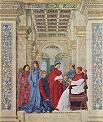
In 1474 Italian gastronome and Vatican librarian Bartolomeo Platina (Sacchi) (1421-81) pub. De Honesta Voluptate et Valetudine (On Honorable Pleasure and Health) (5 vols.), the first printed cookbook, containing mainly Roman medieval recipes incl. some from Maestro Martino de Rossi, whom he met in summer 1463 in Albano.

In 1570 Italian Renaissance chef (to Pope Pius IV and Pope Pius V) Bartolomeo Scappi (1500-77) pub. Opera dell'Arte del Cucinare, which incl. 1K recipes, displays the first known picture of a fork, and waxes lyrical about Parmesan cheese, and how the Jews fatten goose livers to weigh between 2-3 lbs., becoming the first celebrity chef?
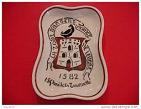
On Mar. 4, 1582 Henry III of Navarre (1553-1610) (later Henry IV of France) dines at the new La Tour d'Argent (Silver Tower) inn in Paris (oldest Parisian restaurant to survive to modern times), discovers the fork being used by guests from Venice, and adopts it, his mommy Catherine de' Medici insisting that everybody use it; starting in the 19th cent. every diner who orders the house specialty canard rouennais (pressed duck in blood sauce) is given a momento ticket and recorded in a visitors' book; #112,151 goes to Pres. FDR, #203,728 to Marlene Dietrich, and #253,652 to Charlie Chaplin.

On June 5, 1595 the Battle of Fontaine-Francaise is a strategic V for 3K French Protestant peasants under Henry IV over the 12K-man Spanish Catholic League under Don Juan Fernandez de Velasco, gov. of Milan and constable of Castile; Henry IV's life is saved by his sister Catherine de Bourbon's former chef Guillaume Fouquet de la Varenne (1560-1616), who is promoted to war commissioner followed by comptroller-gen. of posts, replacing Guise family member Hugues Du Mas, going on to reorganize the royal postal network and opening it to the public in 1598, with Catherine de Bourbon uttering the soundbyte: "It seems, la Varenne, that you have earned more by carrying my brother's chickens than by skewering mine."

In 1604 Mons-born French master chief for three prince-bishops of Liege Lancelot (Anseau) de Casteau (Chasteau) (Chestea) (-1613) pub. Ouverture de Cuisine, the first cookbook pub. in French in the Low Countries, which rises beyond medieval recipes to codify haute cuisine, incl. recipes for whipped cream and choux pastry.

In 1608 English traveler Thomas Coryat (1576-1617), who just returned from a 5-mo. tour of Europe (half of which he walked) brings the custom of eating with a dinner fork ("furcifer") back to England from Italy, causing outrage at first as an insult to human dignity; even the rich eat with their hands until late in this cent., at which time the idea of privacy is invented?; he also describes the principle of the umbrella - get the lingo and watch the possiblities unfold?

In 1651 after an apprenticeship with Queen Marie de' Medici, and 10 years as chief chef for the marquis of Uxelles, Dijon, Burgundy-born French chef ("Founder of Haute Cuisine") Francois Pierre de la Varenne (1615-78) pub. Le Cuisiner Francois, which founds modern French haute cuisine, ditching expensive spices for local herbs, introducing veggies incl. peas, artichoke, cucumber, asparagus, and cauliflower, and stressing freshness, serving salty before sweet dishes; introduces the bisque, Bechamel sauce, roux, bouquet garni, fonds de cuisine, reductions, mile-feuille, Hollandaise sauce, duexelles, and the use of butter in place of lard; in 1662 he combines his 1650 book on confitures (jams, jellies, and preserves) with his 1653 book "Le Patissier francois" on pastries in a 3-vol. combo ed., which goes through 30 eds. in 75 years.

About 1650 the cook of French diplomat-marshal Caesar (César), Duc de Choiseul, Comte du Plessis-Praslin (1602-75) invents the sugar-almond confection praline.
In 1656 French chef Pierre de Lune pub. Le Cuisinier, followed in 1668 by Le Nouveau et Parfait Cuisinier.

On Apr. 24, 1671 (Fri.) (a.m.) Swiss-born French maitre d'hotel to Nicolas Fouquet and the Grand Conde (given the honor of carrying a sword) Francois "Le Grand" Vatel (Fritz Karl Watel) (1631-71) commits suicide with his ceremonial sword at the Chateau de Chantilly when the seafood delivery for his extravagant banquet for 2K in honor of Louis XIV is delayed; he is later falsely credited with inventing Chantilly (Whipped) Cream for this occasion, in which it's a hit.
In 1672 the first Parisian coffeehouse (cafe) is opened at the Saint-Germain Fair by an Armenian-Greek named Pasqua Rosee (Rosée), who obtains a citywide coffee monopoly and opens another one in the Quai de L'Ecole, which fails, after which he moves to London.
In 1685 Louis XIV revokes the 1598 Edit of Nantes, forcing Protestant cooks to relocate all over the Protestant world.

In 1686 Cafe Procope, named after French historian Procopius is opened in Paris by Sicilian chef Procopio Cuto (Cutò) (Francesco Procopio dei Coltelli) (It. "knives") (1651-1727), serving that newfangled coffee along with sorbets in porcelain cups by waiters in exotic Turkish garb; it soon becomes a men-only club, the meeting place for French intelligentsia until the mid-1800s, the first literary coffee shop, and later the oldest Parisian restaurant to survive to modern times; Voltaire later sits there all day drinking 40 cups of coffee mixed with chocolate.

In 1691 Limoges-born French royal chef (to Duke Philippe I and Duke Philippe II of Orleans) Francois Massialot (1660-1733) anon. pub. Nouveau Cuisinier Royal et Bourgeois; revised ed. 1733-34. In 1692 he anon. pub. Nouvelle Instruction pour les Confitures, les Liqueuers et les Fruits.
In 1733 French chef to Madame de Pompadour Vincent La Chappele (1690-1745) pub. Le Cuisinier Moderne (3 vols.) in England, the first cookbook author to call his cooking modern, consisting of an expanded version of Massialot with lavish illustrations; a 4-vol. French ed. follows in 1735.
In 1739 anon. French cookbook writer Menon pub. Nouveau Traite de la Cuisine (3 vols.), followed by La Cuisiniere Bourgeoise (1746) (2 vols.), followed by several more titles, which are widely reprinted and imitated, making France the place to get cheap cookbooks.


On May 20, 1756 the Battle of Minorca sees the French under marshal Louis Francois Armand de Vignerot du Plessis, Duc de Richelieu (1696-1788) and Gen. Rochambeau take Minorca from the English after Adm. John Byng (1704-57) lets the French ships slip away from a battle for Ft. St. Philip in Port Mahon, then leaves Minorca on May 24 after failing to sight any more French, letting them return and siege Ft. St. Philip and take it on May 29, then allowing the English garrison to return to England, where their story causes public outrage, getting Byng charged with treason for failing to "do his utmost", and shot on Mar. 14, 1757 at Portsmouth aboard HMS Monarch, after which the public suspects he's a scapegoat and swings opinion in his favor, making him the last adm. executed in this fashion; after the successful siege of Port Mahon, capital of Minorca, mayonnaise (oil and egg yolks) is allegedly invented by Richelieu's chef to celebrate; it doesn't catch on in the U.S. until 1905.
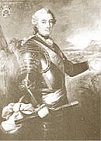
In 1757 French aristocrat Gaston Charles Pierre de Levis (Lévis) (1699-1757) dies ""an incompetent and mediocre individual... who owed his vast fortune to the affection Louis XV felt toward his wife and who had but one claim to fame: he gave his name to a sauce made of all kinds of meat and a variety of seasonings" (Pierre Larousse), giving his name to Mirepoix, the "holy trinity" of onions, carrots, and celery, cooked on gentle heat with butter in order to sweeten it without carmelizing; the Cajuns and Creoles change the holy trinity to onions, bell peppers, and celery.
In 1765 Boulanger begins selling "restaurants", reinvigorating plain broths at the corner of Rue Bailleul and Rue des Poulies in Paris, becoming the original soup Nazi, becoming the first to print a menu offering a selection of foods and liquors instead of "Ordinaries", regular meals at a common table at a fixed time and price; within a few years restaurants expand to gen. health foods then ordinary food.
In 1765 Norman chef Jean-Joseph Close (1757-1828) begins producing the first Pate de Fois Gras in Strasbourg, and in 1782 begins serving it with truffles for Alsace gov. Marechal de Contades - lucky him?
In 1770 after the Frogs get over their hangup about imitating the English habit of taking meals in taverns, the Age of Restaurants begins in Paris, France, serving food at all hours from a menu; by 1780 there are 100+.
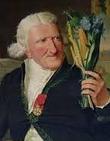
In 1772 after efforts by army pharmacist Antoine-Augustin Parmentier (1737-1813) (who was forced to eat potatoes while a POW of the Prussians in the Seven Years' War), the Paris Faculty of Medicine declares potatoes edible; they had been banned since 1748; too bad, the pop. resists potatoes, forcing him into a series of publicity stunts; not until the 1785 famine in N France are they finally accepted as fit for human consumption. In 1789 Parmentier pub. Treatise on the Culture and Use of the Potato, Sweet Potato, and Jerusalem Artichoke (Traité sur la culture et les usages des Pommes de terre, de la Patate, et du Topinambour), "printed by order of the king".
In 1772 Veuve Clicquot Ponsardin champagne house in Reims, France is founded by Philippe Clicquot-Muiron, going on to pioneer advancements in the methode champenoise via the technique of remuage, producing the 1811 comet vintage, the first truly modern champagne, which becomes the favorite drink of the nobles and haute bourgeoisie of Europe.
In 1784 the Le Grand Vefour (Véfour) restaurant is opened in the Palais-Royal in Paris by Antoine Aubertot, becoming the first grand restaurant in Paris; in 1820 it is purchased by Jean Vefour, who retires in 1823, selling it to Jean Boissier; it goes on to become the #1 Paris restaurant, introducing Mornay Sauce, closing in 1905.

In 1786 Louis XVIII's triple-chinned ex-chef (of the Prince of Conde and the Count of Provence) Antoine B. Beauvilliers (1754-1817) opens the Taverne Anglaise Restaurant in the Palais Royale in Paris, becoming the first luxury restaurant in Paris, catering to aristocratic clientele with mahogany tables and fine linen tablecloths, crystal chandeliers, elegantly-dressed waiters, fine cuisine, and an extensive wine cellar; in 1788 he moves to the Gallery de Valois near the Cafe de Chartres, calling it Restaurant Beauvillers Le Magnifique; after being forced to close in 1795, he opens another restaurant in Paris that closes in 1825; in 1814 he pub. the classic L'Art du Cuisinier (2 vols.) (2nd ed. 1821).
In 1789 after the French Rev. makes it un-PC for the rich to maintain cooking-catering staffs, Maison Chevet is founded by Marie Antoinette's former rose gardener Hilaire-Germain Chevet to supply food and chefs for major functions in Paris and throughout Europe, dominating the French catering business; "Chevet was not simply the supplier [of food] to French high society, but also to the high priests of European finance. An array of cooks, respected, respectful, and well-disciplined, would execute magnificent work." (Joseph Favre) In 1820 they sell-out to Potel & Chabot, who expand, setting up a chain of tea salons and boutiques, which they sell after WWII, continuing in the catering business, doing 1K parties a year, incl. Aga Khan and the Shah of Iran.

In 1794/5 (French Republican Year III) Madame Merigot (Mérigot) pub. La Cuisiniere Republicaine (La Cuisinière Républicaine), (The Female Republican Cook), describing ways to prepare and preserve potatoes, becoming the first potato cookbook, bragging about omitting "patisseries and ragouts recherches" (pastries and exquisite ragouts) (aristocratic cuisine) - you have to know when to hold 'em, know when to fold 'em?
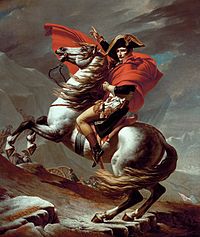


On June 14, 1800 Napoleon's army defeats Austria and its allies under Transylvanian-born Austrian field marshal (of Greek descent) Michael Friedrich Benoit, Baron von Melas (1729-1806) at the Battle of Marengo near Alessandria in the Piedmont (NW Italy S of Turin); it seems lost for the French until Marshal Louis Charles Antoine Desaix (b. 1768) risks his marengos to save the day with a charge, and is killed doing it; Napoleon names his short (14.1 hand) gray Arabian warhorse Marengo (1793-1831) after the battle; Napoleon's chef Dunand invents yummy Chicken Marengo (chicken, garlic, tomatoes, white wine and cognac with crayfish and fried eggs on the side) after the battle, and Napoleon orders it served henceforth after every battle, going on to conquer Italy.

In 1804 Paris-born French patissier chef Marie-Antoine (Antonin) Careme (Carême) (1784-1833), known for his elaborate pieces montees is hired by French diplomat Charles Maurice de Talleyrand-Perigord for his new Chateau de Valencay outside Paris, where he goes on to invent Haute (Grande) Cuisine, along with the chef's hat (toque blanche), becoming known as "King of Chefs and Chef of Kings". In 1833-4 he posth. pub. L'Art de la Cuisine Francaise (5 vols.).
In 1824 Richmond, Va.-born Mary Randolph (1762-1828) (sister of Thomas Mann Randolph Jr., son-in-law of Thomas Jefferson) pub. The Virginia Housewife; Or, Methodical Cook; becomes one of the most influential cookbooks of the cent., with the last ed. pub. in the 1860s; tries to save women time and money in their kitchens, popularizing 40+ vegetables, boldly calling for "poisonous" tomatoes in her Spanish-based recipes, and introducing gazpacho;l "Method is the soul of management."

In Dec. 1825 Belley, Ain, France-born politician Jean Anthelme Brillat-Savarin (1755-1826) pub. the bestseller The Physiology of Taste; Or, Transcendental Gastronomy (Physiologie du Goutt, ou Méditations de Gastronomie Transcendante; ouvrage théorique, historique et à l'ordre du jour, dédié aux Gastronomes parisiens, par un Professeur, membre de plusieurs sociétés littéraires et savantes), a compendium on the art of dining, folding-in the philosophy of Epicurus and dissing carbohydrates incl. sugar and white flour in favor of protein-rich ingredients, making him a star and founding the science of gastronomy; tells about his visit to the U.S., where he witnessed a turkey shoot in 1797; "Tell me what you eat and I will tell you what you are"; "A dessert without cheese is like a beautiful woman with only one eye"; "The discovery of a new dish confers more happiness on humanity than the discovery of a new star"; "Those persons who suffer from indigestion, or who become drunk, are utterly ignorant of the true principles of eating and drinking."
In 1836 Bearnaise (Béarnaise) Sauce, consisting of egg yolk and butter flavored with shallots, chervil, and tarragon vinegar, and served on steak is invented by Chef Collinet (inventor of puffed potatoes), and first served at the opening of Le Pavillon Henri IV Restaurant in Saint-Germain-en-Laye near Paris, named after the Bearn region of SW France, where gourmet Henry IV was born; Hollandaise sauce substitutes lemon juice for the tarragon vinegar.

In 1837 after fleeing the July Rev. to England in 1830, Meaux-en-Brie, France-born Alexis Benoist Soyer (1810-58) becomes head chef of the new Reform Club in London, with a £1K/year salary, becoming the first celebrity chef?, going on to institute innovations incl. gas cooking, cold-water refrigerators, and adjustable ovens; during the Great Irish Famine of 1847 he invents the soup kitchen to serve "famine soup" to the poor; in 1849 he begins marketing his tabletop "magic stove"; during the 1853-6 Crimean War he advises the British army, installing regimental cooks. In 1854 he pub. A Shilling Cookery for the People.
In 1840 Antoine's La. Creole restaurant is founded in the French Quarter of New Orleans, La. by Antoine Alciatore, whose son Jules invents Oysters Rockefeller (named after John D. Rockefeller) (1889), Pompano en Papillote, and Eggs Sardou, and creating the Rex Room; Jules' son Roy Alciatore gives it an internat. reputation, going on to host VIPs incl. the Duke and Duchess of Windsor, Pope John Paul II, and several U.S. presidents.

In 1856 Trets-born French chef Urbain Dubois (1818-1901) pub. La Cuisine classique, études pratiques, raisonnées et démonstratives de l'école française appliquée au service à la Russe (2 vols.), first in a series of classic French cookbooks, incl. Cuisine de tous les pays, études cosmopolites où sont rassemblées nombre de recettes, allemandes, françaises, italiennes, anglaises, russes, polonaises, etc. (1868), Cuisine artistique, étude de l'école moderne (2 vols.) (1872), Nouvelle Cuisine bourgeoise pour la ville et pour la campagne (1878), and Grand Livre des pâtissiers et des confiseurs (1883); he goes on to work for Prince Alexey Orloff, Russian ambassador to France, and invent Veal Orloff.
In 1856 Jean Naigeon of Dijon, France substitutes verjuice (sour juice from unripe grapes) as the souring agent for mustard in place for vinegar, creating Dijon mustard.

In 1861 Cheapside, London-born Isabella Mary Beeton (nee Mayson) (1836-65) pub. Mrs. Beeton's Book of Household Management (bestseller - 60K copies the first year, 2M by 1868) (1,112 pages, with color plates which originally appeared in hubby Samuel Orcher Beeton's "Englishwoman's Domestic Magazine"); contains 900+ recipes, becoming the first to print recipes in the modern format, showing much plagiarism and ludicrous ignorance about food, incl. boiling pasta for 1 hour 45 min., calling lobsters indigestible, garlic offensive, and potatoes suspicous (narcotic) - just in time for poor Miss Scarlett?

In 1862 Saint-Denis, France-born chef Charles Ranhofer (1836-99) becomes head chef of Delmonico's Restaurant in New York City (until 1876, then 1879-96), going on to make it the most famous in the U.S., and become the first internationally-known chef from a U.S. establishment. In the 1860s Mrs. LeGrand Benedict invents Eggs Benedict after she becomes bored with the lunch menu at Delmonico's; either that or in the 1890s hung-over banker Lemuel Benedict makes a special order at the Waldorf-Astoria? In 1876 Baked Alaska is invented by Charles Ranhofer of Delmonico's Restaurant in New York City, and named after the Alaska Purchase; other versions go back to Thomas Jefferson in the White House in 1802; AKA Norwegian Omelette and Glace au Four. In 1876 sea captain Ben Wenberg introduces Ranhofer to Lobster Newberg, which is initially called Lobster Wenberg until they fall out and Ranhofer scrambles the name. In 1895 Charles Ranhofer and Charles Delmonico introduce the "alligator pear" (avocado) (imported from South Am.) in their restaurant.
In 1866 after serving as the head chef for the Rothschild family until 1848, followed by the mgr. of the Les Freres Provencaux Restaurant at the Palais-Royal in Paris, Bordeaux-born French chef (pupil of Marie-Antoine Careme) Adolph Duglere (Dugléré) (1805-84) becomes head chef of the Cafe Anglais in Paris (founded 1802), which becomes #1 in Paris in the 19th cent., going on to invent the dish Pommes Anna, along with Tournedos Rossini (really invented by Escoffier or Careme?), and serve the Dinner of the Three Emperors on June 7, 1867 (Tsar Alexander II of Russia, his son Tsar Alexander III, and William I of Prussia, along with Prince Otto von Bismarck) while they are in Paris for L'Exposition Universelle, requesting that no expense be spared, resulting in 16 courses with eight wines served over eight hours at 400 francs per person; at 1:00 a.m. Alexander II complains that they didn't serve foie gras, but is satisfied with the explanation that the French don't eat it in June; Cafe Anglais is demolished in 1913.
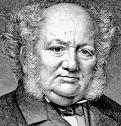
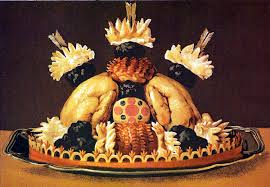
In 1867 Paris-born French chef-patissier (pupil of Antonin Careme) Jules Gouffe (Gouffé) (1807-77), new head chef of the Jockey Club in Paris, known for his pieces montees pub. Le Livre de Cuisine : comprenant la cuisine de ménage et la grande cuisine avec 25 planches imprimées en chromolithographie et 161 gravures sur bois dessinées d'après nature par, followed by Le Livre de Pâtisserie : Ouvrage contenant 10 planches chromolithographiques et 137 gravures sur bois d'après les peintures à l'huile et les dessins de E. Ronjat (1873), making him a star, becoming known as "the Apostle of Decorative Cooking".
On Sept. 19, 1870-Jan. 28, 1871 the Siege of Paris by the Prussians reduces the pop. to starvation before they surrender; French chef Alexandre Etienne Choron (1837-1924) of the Voisin Restaurant in Paris, inventor of Choron Sauce (Bernaise Sauce with tomato concentrate) satisfies his starving patrons by serving animals from the local zoo, incl. elephant, antelope, camel, kangaroo, bear, wolf, and donkey, finally stooping to horse and cat with rat, embellishing them with Mouton-Rothschild 1846, Romanee-Conti 1858, and Chateau Palmer 1864; on Dec. 25 and Dec. 31 he introduces trompe d'elephant in sauce chasseur and elephant bourguignon.

In 1872 Yerville-born French chef Alfred Prunier (1848-1925) opens the Prunier Restaurant on Rue Duphot in Paris, specializing in lobster, caviar, and grilled dishes, becoming famous and attracting celeb clientele incl. Sara Bernhardt, Oscar Wilde, and Georges Clemenceau, along with Russian aristocrats; in 1924 his son Emile Prunier opens another restaurant on Victor Hugo Ave. in Paris, which attracts celeb clientele incl. F. Scott Fitzgerald and Ernest Hemingway; in 1925 his daughter Simone Prunier takes over her daddy's restaurant, opening another in London that closes in 1976.

On Sept. 15, 1877 after a life as a fighter for Giuseppe Garibaldi and an anarchist, becoming a disciple of Antonine Careme, Swiss chef Joseph Favre (1849-1903) begins pub. La Science Culinaire in Geneva, becoming the first prof. chef to run a journal, and the first to suggest culinary exhibitions and competitions, pioneering molecular gastronomy; the first culinary exhibition is held in 1878 in Frankfurt. In 1879 Favre founds the Union Universelle pour le Progres de l'Art Culinaire, which expands to 80 chapters worldwide incl. the Societe des Cuisiniers Francais in Paris, which pub. L'Art Culinaire; too bad, he is expelled in Apr. 1883 along with five others after the majority get pissed-off at their sponsorship of cooking classes and free lectures, which they consider a betrayal of prof. secrets, and Favre founds L'Academie Culinaire de France. After retiring and turning writer he dies on Feb. 17, 1903 in Boulogne-sur-Seine, leaving Dictionnaire Universel de Cuisine Practique: Encyclopédie Illustrée d'Hygiène Alimentaire; "I have long thought that classification in the form of a dictionary, including the etymology, history, food chemistry and properties of natural foods and recipes would be a book most useful to society"; "There is an abyss between the greed of the Romans, who had to vomit before they could enjoy fresh gorging; the gluttonous gastronomy whose effects are indigestion, disorders and gout; and culinary science, which aims to achieve health through food that sustains virility, the fruitful development of the vital forces and sustains the intellectual faculties in their integrity. This gap must be filled. It is to France that the honor has been given of putting hygienic cooking into practice."


In 1879 after her daddy travels to Mont Saint-Michel in Normandy in 1872 to restore the abbey, and she meets Victor Poulard, then marries him on Jan. 14, 1873, founding the Hostellerie de la Tete d'Or, finding that the clientele came and went quickly with the tide, giving her an idea, Anne "Annette" Boutiaut (1851-1931) founds the La Mère Poulard restaurant in Mont Saint-Michel, serving giant omelettes baked in a wooden hearth to make customers stay longer, after which it becomes famous for them.
In 1879 yeasty Funnel Cake (Ger. "Drechderkuche) (made with choux dough) is brought to Penn. by Dutch immigrants, going on to become a popular finger food at carnivals and fairs.
About 1880 the Dover Egg Beater is introduced; after an 1895 ruling disallowing the Dover trademark, Meringue becomes a rage in the West by the early 1900s.
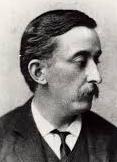
In 1885 after moving to New Orleans, La. in 1877, Lefkada, Greece-born writer Patrick Lafcadio Hearn (1850-1904) pub. La Cuisine Creole: A Collection of Culinary Recipes, From Leading Chefs and Noted Creole Housewives, Who Have Made New Orleans Famous For Its Cuisine, the first cookbook in English on La. Creole Cuisine, which by the 1980s is called Cajun cuisine.

In 1885 the all-American Hamburger is invented by 15-y.-o. Charles "Hamburger Charlie" Nagreen (1870-1951), who sells them from a food stand at the county fair in Seymour, Wisc. after seeing his meatballs sell slow then flattening them and serving them on sliced bread, naming them after Hamburg, Germany; either that, or it is invented by brothers Frank and Charles Menches of Akron, Ohio, who run out of pork sausage for their sandwich concession at the Buffalo Fair in Hamburg, N.Y. and substitute ground beef; either that, or on July 4, 1891 Oscar Weber Bilby of Tulsa, Okla. becomes the first to serve a hamburger on a bun; either that, or in this decade Fletcher Davis (1864-1941) of Athens, Tex. invents the hamburger, setting up Uncle Dave's Hamburger Stand at the 1904 St. Louis World's Fair; either that, or in 1895 Danish immigrant Louis Lassen sells the first hamburger and steak sandwich from his small Louis' Lunch lunch wagon in New Haven, Conn.; it is never served with ketchup - just what 75M Americans with full dinner pails need to clog their veins?
In 1888 after treating soldiers during the U.S. Civil War and becoming convinced that coffee and lean chopped beefsteak can control diarrhea, Am. food fad physician James Henry Salisbury (1823-1905) invents Salisbury steak (ground beef patty blend with gravy) as part of a low-carb diet for weight loss (eat 3x a day with plenty of water); it becomes popular during WWI when English-speaking nations attempt to er, chuck German-sounding names like hamburger.
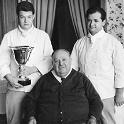

In 1889 Maison Pic (L'Auberge du Pin) in Valence, Drome, France is opened by Eugene Pic and Sophie Pic, earning three Michelin stars in 1939 under their son Andre Pic (1893-1984) (known for his crayfish gratin, Pike Richelieu, and pig bladder chicken), then losing star #3 in 1946, and star #2 in 1950, causing Andre's son Jacques Pic (1932-92) to become a chef, winning back star #2 in 1959, and star #3 in 1973; too bad, in 1995 it loses star #3, causing Jacques' daughter Anne-Sophie Pic (1969-) to take over from her brother Alain Pic, regaining it in 2007.
In 1889 during a French escargot shortage, Oysters Rockefeller (named after America's richest man John D. Rockefeller) is invented by Jules Alciatore of Antoine's Restaurant in New Orleans, La., taking the recipe to the grave with him after repeatedly denying that it contains spinach.


In 1890 after Swiss hotelier Cesar Ritz (1850-1918) buys the Savoy Hotel in London, going on to establish Ritz hotels around the world, incl. the Hotel Ritz in Paris in 1898 and the Carlton in London in 1899, Villeneuve-Loubet-born French chef Georges Auguste Escoffier (1846-1935) takes over the kitchens of the new Ritz Savoy Hotel in London, luring the British aristocracy, causing aristocratic women to first be seen dining in public, going on to invent Peach Melba (1893), Melba Toast (1897), Cherries Jubilee (1897), and Tournedos Rossini, introduce a la carte menu in 1899, and train Ho Chi Minh to be a pastry chef. After a financial scandal, Escoffier leaves the Savoy in 1898 and sets up in the new Carlton Hotel in London in 1899, stealing business from the Savoy. In 1903 he pub. Le Guide Culinaire (The Culinary Guide), with 5K recipes, which codifies, streamlines, and simplifies modern French haute cuisine, incl. the five mother sauces; tr. into English in 1907. In 1913 he serves Kaiser Wilhelm II and his retinue aboard the SS Imperator, causing the kaiser to utter the soundbyte: "I am the emperor of Germany, but you are the emperor of chefs." He goes on to become known as "king of chefs and chef of kings", originating the brigade de cuisine system, run by chefs de partie. In 1991 the Auguste Escoffier School of Culinary Arts is founded, with campuses in Austin, Tex. and Boulder, Colo.
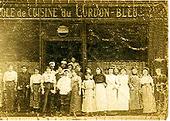
In Jan. 1895 Marthe Distel founds the Le Cordon Bleu (Fr. "The Blue Ribbon") cooking school in Paris, growing to 20K students by modern times; the first classes feature a newfangled electric stove; co-founder chef Henri-Paul Pellaprat (1869-1954) teaches there for 32 years, pub. the million-selling L'Art Culinaire, along with La Cuisine Familiale et Pratique. In 1945 Madame Elisabeth Brassart (1897-1992) buys Le Cordon Bleu, selling it in 1984 to family friend Andre J. Cointreau.
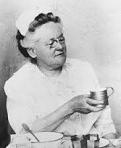
In 1896 after suffering a stroke at age 16 and enrolling in the Boston Cooking School at age 30, Boston, Mass.-born Fannie Merritt Farmer (1857-1915) pub. Boston Cooking-School Cookbook, which standardizes kitchen measurements, containing 1,850 recipes, becoming a perennial bestseller, going through 13 eds. by 1990.
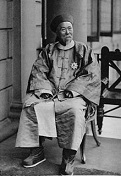
In Aug. 1896 Chinese ambassador ("the yellow Bismarck") Gen. Li Hung-chang (Li Hongzhang), Marquess Suyi (1823-1901) visits the U.S., causing Chop Suyi, er, Chop Suey to become popular in the U.S. after his chef allegedly devises it in New York City.

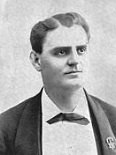
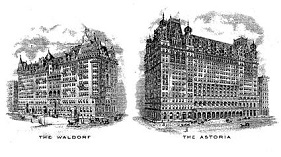
On Nov. 1, 1897 after his mother Caroline Webster Schermerhorn Astor (1830-1908) moves uptown, future Titanic victim John Jacob "Jack" Astor IV (1864-1912) opens the 17-story Astoria Hotel next to the Waldorf Hotel, designed to be connected through Peacock Alley, going on to become known as the Waldorf-Astoria Hotel, becoming the first hotel with electricity and private bathrooms, and the motto "The guest is always right", becoming a favorite with the wealthy upper crust incl. Andrew Carnegie; the first maitre d'hotel is Swiss-born Oscar Tschirky (1866-1950) (until 1943), who becomes known as "Oscar of the Waldorf", inventing Waldorf Salad and Eggs Benedict, and popularizing Thousand Island dressing along with pub. a popular 900-page cookbook titled "The Cookbook by Oscar of the Waldorf" in 1896, followed in 1902 by the booklet "Serving a Course Dinner"; Tschirky is later eulogized by James Remington McCarthy as an artist who "composed sonatas in soups, symphonies in salads, minuets in sauces, lyrics in entrees".

In 1897 French actress Suzanne "Suzette" Reichenberg (1853-1924) serves flaming crepes onstage at the Comedie Francaise, provided by Monsieur Joseph of the Restaurant Marivaux, causing Georges Auguste Escoffier to publicize the name Crepes Suzette; teenie waiter Henri Charpentier accidentally invents the dish in 1895 at Monte Carlo's Cafe de Paris while preparing a dish for the Prince of Wales (Edward VII), whose guests incl. a French babe named Suzette?
In 1900 the first quadrennial Internat. Exhibition of Culinary Art (originally the International Verband Koche Deutschland) is held in Frankfurt, Germany, with four nations participating; during WWII Adolf Hitler bans it; in 1996 it moves to Berlin, followed in 2000 by Erfurt; the 2008 event has 54 nations and 1.6K chefs participating, with Normany coming in first, Germany 2nd, and Switzerland 3rd.


On Apr. 19, 1921 Ain-born former simple country girl turned chef Eugenie "La Mere" Brazier (1895-1977) opens her first restaurant in onion-loving Lyon, France, rising with help of food critic Curnonsky to become the first woman to earn three Michelin stars in 1933, turning Lyon into the #2 food capital of France after Paris; she also becomes the first French chef of either sex to attain six Michelin stars for her restaurants on Rue Royale and in the Alpine foothills at Col de la Luère; her cooking attracts celebrity clientele incl. Charles de Gaulle, Valéry Giscard d'Estaing, and Marlene Dietrich, who loves her Langouste Belle Aurore, a whole sweet lobster drenched in brandy and cream; her student Paul Bocuse (1926-) goes on to keep Lyon at the top.
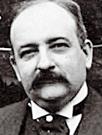
In 1921 Angers, France-born gastronome (pupil of Henri-Paul Pellaprat) Curnonsky "Cur" (Maurice Edmond Sailland) (18872-1956) (Lat. "cur" + "non" = why not?) (who in 1907 coined the term coined the name "Bibendum" for the Michelin Man, because "Michelin tires drink everything [nails], even obstacles") and Marcel Rouff (1877-1936) found the mag. La France Gastronomique. In 1926 after Curnonsky begins promoting gastronomic motor tourism, Michelin Tire Co., pub. since 1900 of the Michelin guides for motorists begins awarding Michelin Stars for fine dining establishments, starting with only one star then cranking up to three in 1931, changing the cover from blue to red, with the number of stars indicating how far it's worth driving out of one's way to visit. In 1927 Curnonsky is officially elected prince of gastronomy by 3K chefs in Paris. In 1930 Curnonsky co-founds the Academie des Gastronomes, becoming pres. #1 (until 1949). In 1947 Curnonsky and Madeleine Decure (-1968) found the mag. Cuisine et Vins de France. In 1950 Curnonsky co-founds the Confrerie de la Chaine des Rotisseurs, an internat. gastronomic society based in Paris.

In 1921 Louhans-born French chef Fernand Point (1897-1955) takes over his father's restaurant in Vienne (20 mi. S of Lyon) and renames it La Pyramide after the Plan de l'Aiguille, a truncated Roman pyramid left over from a Roman circus, turning it into France's #1 restaurant, with three Michelin stars, defining modern French cuisine; too bad, after his death it starts losing stars.

On July 4, 1924 Italian-born chef Caesar Cardini (1896-1956) of scam-city bordertown Tijuana, Mexico invents Caesar Salad (Romaine lettuce, Parmesan cheese, 2-min. eggs, olive oil, Worcestershire sauce et al.), making Caesar's Restaurant popular with Hollywood stars; in 1926 his brother Alex adds anchovies; it was really invented in 1903 by Italian cook Giacomo Junia of Chicago, Ill. at the New York Cafe, who named it after Julius Caesar? - the English version is Richard the Lettuce Heart?

In 1925 Poitiers, France-born Anglophile chef Xavier Marcel Boulestin (1878-1943) opens the Restaurant Francais in Leicester Square, London, which in 1927 moves to Covent Garden, becoming the most expensive restaurant in Britain, popularizing French cuisine; in 1937-9 he becomes the first TV chef, with a show on the BBC.
In 1929 the modern dessert Pavlova, named after Russian ballerina Anna Pavlova is invented in in New Zealand.


In 1930 Jean-Baptiste Troisgros and his wife Marie, founders of the Troisgros Family found the Hotel-Restaurant des Platanes in Roanne (90km W of Lyon), France, which is renamed Hotel Moderne in 1935; in 1957 they change the name to Les Freres Troisgros, with their sons Jean Troisgros and Pierre Troisgros (1928-) taking over the cooking; in 1968 they earn their 3rd Michelin star, with food critic Christian Millau calling it "the best restaurant in the world"; Pierre's son Michel Troisgros (1958-) carries on, while his other son Claude Troisgros becomes a big chef in Rio de Janeiro, Brazil; Nevers, Burgundy, France-born Guy Savoy (1953-) apprentices with the Troisgros brothers, opening his own restaurant in Rue Duret in Paris in 1980, which receives two Michelin stars in 1985, opening a sister restaurant in Las Vegas, Nev.
In 1932 the Paris Chamber of Commerce establishes the first Atelier Ecole, offering prof. training in food service via the Gregoire (Grégoire) School and Ferrandi School, which in 1983 establishes the Ecole Superieure de Cuisine Francaise (École Supérieure de Cuisine Française) program; in 1997 they are merged as Ecole Gregoire-Ferrandi (École Grégoire-Ferrandi).
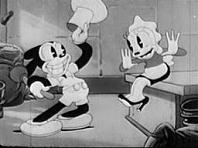
On June 19, 1933 Walter Lantz's and Bill Nolan's B&W cartoon Ham and Eggs (Universal Pictures) debuts, starring Oswald the Lucky Rabbit, who works as a chef with a girl beagle waitress.

In 1936 after her hubby commits suicide, The Joy of Cooking is self-pub. by St. Louis, Mo. homemaker Irma Starkloff Rombauer (1877-1962), starting slow (3K copies) until Bobbs-Merrill Co. picks it up, after which it sells 18M copies; in a country sliding into the Depression, the title is a keeper; daughter Marion Rombauer Becker takes over in 1951.
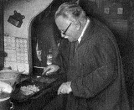
In 1938 Carcassonne-born top French chef and cookbook author Prosper Montagne (Montagné) (1865-1948) pub. Larouse Gastronomique, which becomes the std. textbook of French cuisine and gastronomy, dissing pieces montees and all superfluous garnitures and decorations as a nuisance to be done away with.
In 1938 Red's Eats opens in Boothbay, Maine, moving to Wiscasset, Maine in 1954, becoming the world's most famous lobster shack, known for its lobster rolls.
In 1938 Wells Supper Club in Harlem, N.Y. opens, serving fried chicken and waffles, making fans of Sammy Davis Jr., Nat King Cole et al., causing a nat. trend for chicken and waffle restaurants; in 1976 Harlem native Herb Hudson opens Roscoe's House of Chicken and Waffles in Los Angeles, Calif., which is visited by Pres. Obama in 2011; in 1996 soul singer Gladys Knight and gospel singer Ron Winan open Gladys and Ron's Chicken and Waffles in Los Angeles.
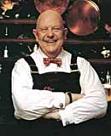
In 1940 after being expelled by Reed College in 1926 for homosexual activity, causing him to move to Europe to study theater before returning in 1937 and setting up catering firm Hors d'Oeuvre Inc., 6'-tall Portland, Ore.-born big belly gay chef James Andrew Beard (1903-85) pub. his first cookbook Hors D'Oeuvre and Canapes, making him a celeb; on Aug. 30, 1946 he becomes the first to teach cooking on U.S. TV on NBC-TV's cooking show I Love to Eat, (until 1947), beginning his rise to the #1 culinary figure in the U.S., "the Dean of American Cuisine" (Julia Child); in 1955 he establishes the James Beard Cooking School; in 1986 the James Beard Foundation is established in his honor by Inst. of Culinary Education founder Peter Kump, issuing the annual James Beard Foundation Awards, "the Oscars of Food".
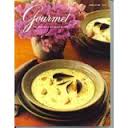
In Jan. 1941 the monthly mag. Gourmet is founded by Earle R. MacAusland (1890-1980), becoming the first U.S. mag. devoted to food and wine; it ceases pub. in Nov. 2009.



On Oct. 15, 1941 after a test-run at the 1939 New York City's World Fair, Le Pavillon restaurant on 5 E. 55th St. in Manhattan, N.Y. on Fifth Ave. across from the St. Regis Hotel opens, run by French-born chef Henri Soule (Soulé) (1903-66) and Saint Vinnemer, Yonne, France-born chef Pierre Franey (1921-96), becoming the #1 French restaurant in the U.S. until it closes in 1971, with clientele incl. the Kennedy family, spawning a slew of offshoots. In 1960 after a revolt by the staff over low pay, Franey and his Bourg-en-Bresse (near Lyon), France-born apprentice Jacques Pepin (Pépin) (1935-) leave to work for the Howard Johnson's restaurant chain, and Franey assists Craig Claiborne of The New York Times in writing restaurant reviews on his weekends off, leaving Howard Johnson's in 1975 to begin his own column "The 60 Minute Gourmet" for the NYT, which is syndicated in 360+ newspapers worldwide. In 1976 Pepin pub. La Technique: An Illustrated Guide to the Fundamental Techniques of Cooking, which becomes a std. textbook on French cooking; in 1997 The Complete Pepin (Pépin) debuts on PBS-TV (until ?). In 1999 Julia and Jacques Cooking at Home with Julia Child debuts on PBS-TV (until 2000).
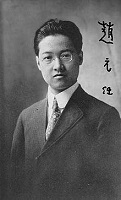
In 1946 Chinese-born Am. linguist Yuen Ren Chao (1892-1982) pub. the bestseller How to Cook and Eat in Chinese, which coins the terms "pot sticker" and "stir fry"; his Recipe for Stirred Eggs in Ch. 13 is a classic of comedy.
In 1946 the Culinary Inst. of Am. in Hyde Park, N.Y. is founded to crank out chefs; in Apr. 2007 it begins giving out the Augie Award, named for French chef ("the Chef of Kings and King of Chefs") Georges Auguste Escoffier (1846-1935).
In 1946 Detroit-style pizza is invented by Buddy's Rendezvous (later Buddy's Pizza) in Detroit, Mich., featuring a thick deep-dish crisp crust with a fried or crunchy texture.

In fall 1948 Langdon, Bordeaux-born French chef Raymond Oliver (1909-90) opens the new Le Grand Vefour (Véfour) on the Rue de Beaujolais in the Palais-Royal district of Paris, attracting celeb clientele incl. Winston Churchill, Albert Camus, Georges Simenon, Andre Malraux, Jean Cocteau, colette, Henry Ford, David Rockefeller, the Aga Khan, Prince Rainer and Princess Grace, snubbing the noveau cuisine in favor of the cuisine of his native Gascony.

In 1950 Leytonstone, London, England-born husky-voiced TV chef Fanny Cradock (Phyllis Nan Sortain Pechey) (1909-94) and her hubby Johnnie Cradock (-1987), AKA Maj. and Mrs. Cradock, AKA Phyllis Cradock and Frances Dale begin writing a column in The Daily Telegraph under the alias "Bon Viveur" (until 1955), introducing the English public to French and Italian cuisine incl. pizza, and launching their career of turning theaters into restaurants, where they cook dishes for the audience while affecting a French accent; in 1955 she begins hosting a cooking show on BBC-TV, based on the recipes of her hero Auguste Escoffier, cutting corners for budget purposes, with soundbytes incl. "This won't break you", "This is perfectly economical", and "This won't stretch your purse", loving to wear chiffon ballgowns onscreen along with thick makeup while wielding her piping bag and using vegetable dyes, using only gas stoves in order to represent the British Gas Council; her Christmas Cookery shows get reaired year after year; too bad, in 1976 after fleeing to exile in Ireland to avoid income taxes, she stinks up a guest appearance on The Big Time, misadvising cooking show winner Mrs. Gwen Troake on how to make dessert, causing the press to expose her and Johnnie as living together unmarried, after which the BBC cancels her contract.
In 1950 the yummy not-too-spicy seafood dish Chili Crab is invented in Singapore by Cher Yam Tian and Lim Choon Ngee, becoming the nat. dish.
In 1951 Bananas Foster, a desert made from bananas, butter, brown sugar etc. served on vanilla ice cream is created by Paul Blange of Brennan's Restaurant in New Orleans, La., named for Owen Brennan's friend Richard Foster, New Orleans crime commission chmn.

In 1955 after moving to Tex. in 1931 and running the Houston Country Club, where she becomes a celeb with men for her haute cuisine, Benson, N.Y.-born chef Helen Corbitt (1906-78) becomes food services dir. of Neiman-Marcus, going on to develop her own unique cuisine for their menu, incl. Poppy Seed Dressing, her recipes getting featured in their 1969 Neiman Marcus Kitchen Computer, the first consumer computer; she goes on to pub. seven cookbooks and become known as "the Balenciaga of food and the best cook in Texas" (Chicago Tribune, 1975) and "the Julia Child-esque cooking celebrity with a Texas twang" (Los Angeles Times, 2009).
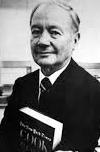
In 1957 Sunflower, Miss.-born closet gay foodie Craig Claiborne (1920-2000) becomes food editor of The New York Times, the first male to supervise the food section of a major U.S. newspaper, broadening it past female readership and homemaking, covering new restaurants and chefs, introducing readers to Asian, Mexican, as well as French cuisine, and creating the newspaper's 4-star rating system for restaurants, going on to pub. a series of 20+ cookbooks, pioneering low sodium and low cholesterol diets; in 1975 he wins a contest sponsored by Am. Express for a no-limit dinner for two at any restaurant of his choice, selecting Chez Denis in Paris and fellow chef Pierre Franey and racking up a $4K tab on a 5-hour 31-course meal, causing a firestorm of controversy, with Pope Paul VI calling it "scandalous".


In 1961 after editing work and lobbying by Houghton, Mich.-born food ed. Avis DeVoto (nee MacVicar) (1904-89), Pasadena, Calif.-born 6'2" failed novelist and Le Cordon Bleu graduate Julia Carolyn Child (nee McWilliams) (1912-2004), Normandy, France-born cooking teacher Simone "Simca" Beck (1904-91), and Louisette Bertholle (1905-99) pub. the bestseller Mastering the Art of French Cooking, Vol. 1 (Alfred A. Knopf) (726 pages), turning Americans on to French cuisine; vol. 2 in 1970. On Feb. 11, 1963 Child's TV show The French Chef debuts on WGBH in Boston, Mass. (until 1973), teaching viewers how to do it at home, with butter preferred to "that other spread" (margarine), along with cream, and each episode featuring an "impeccably clean towel"; her closing line is "Bon appetit".


In 1965 French restaurant critics Henri Gault (1929-2000) (inventor of the term "nouvelle cuisine"), Christian Millau (Dubois-Millot) (1928-), and Andre (André) Gayot (1929-) found Gault et Millau, which becomes one of the most influential French restaurant guides, using a rating scale of 1-20, championing nouvelle cuisine to distinguish it from the Michelin Guides.

In 1967 London-born English chef Graham Kerr (1934-) and English-born Australian wine promoter Leonard Paul "Len" Evans (1930-2006) pub. The Galloping Gourmets, about their 35-day global restaurant trek, which spawns the TV series The Galloping Gourmet in 1969-71, hosted by Graham Kerr and produced by his wife Treena.



On Mar. 2, 1969 the turbojet-powered supersonic Mach 2.0 Anglo-French Aerospatiale-BAC Concorde makes its first test flight from Toulouse, followed by a test flight from an RAF base at Fairford, Gloucestershire on Apr. 9, and its first supersonic flight on Oct. 1; French food journalist Henri Gault (1929-2000) first uses the term "nouvelle cuisine" for low-cal haute cuisine food prepared by French chef (from Lyon) (pupil of Fernand Point) Paul Bocuse (1926-) et al. for the Concorde's maiden flight?
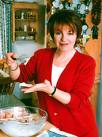
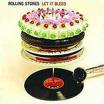
In 1969 Woking, Surrey, England-born chef Delia "Dee" Smith (1941-) becomes food ed. for the Daily Mirror, later marrying deputy ed. Michael Wynn-Jones, and baking the cake seen on the cover of the Dec. 5, 1969 Rolling Stones album Let It Bleed. In 1971 she pub. the bestseller How to Cheat at Cooking. In 1973-5 she hosts the BBC-TV show Family Fare, making her into a British celeb. In 1998 Delia's How to Cook debuts on BBC-TV (until 2003), causing a 15% rise in egg sales in Britain, along with any utensil she uses incl. omelette pans, becoming known as the Delia Effect. She goes on to sell 21M cookbooks.

In 1969 Commentry, Allier-born French chef Roger Verge (Vergé) (1930-) opens the Moulin de Mougins in the French Riviera, promoting his new Cuisine de Soleil (Cuisine of the Sun), a variation of seafood-heavy Provencal Cuisine, focusing on fresh local ingredients.

In 1971 after immigrating to the U.S. in 1951 then settling in Chicago, Ill. in 1959, developing Stouffer's Frozen Spinach Souffle, pioneering freeze-drying and boil-in bags, then opening The Bakery restaurant in 1963 (until 1989), attracting clientele incl. Arthur Fiedler, Hugh Hefner, and Frank Zappa, Hungarian-born Louis (Lajos) Istvan Szathmary (Szathmáry) II (1919-1996) pub. the bestseller The Chef's Secret Cook Book: A Practical, Personal Invitation to Classic Cookery, followed by The Chef's New Secret Cookbook (1975), making him a celeb.



In 1971 Chatham Borough, N.J.-born chef Alice Louise Waters (1944-) opens Chez Panisse restaurant in Berkeley, Calif., pioneering low-fat veggie-fruit-heavy Calif. Cuisine; in 2001 Gourmet mag. names it the best restaurant in the U.S. In 1972 she hires broke Stamford, Conn.-born Harvard U. architecture grad Jeremiah Tower (1942-), who goes on in 1984 to open the Stars restaurant in San Francisco, Calif., which becomes one of the top-grossing restaurants in the U.S. (until 1999), attracting celeb chefs incl. Mario Batali, opening several branches. After Tower leaves Chez Panisse, they hire local Jonathan Waxman (1950-), who in 1984 founds Jams Restaurant on E 79th St. in New York City, bringing Calif. Cuisine to the Big Apple, making him a celeb.
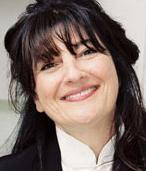
In 1972 New York City-born chef-food critic (U. of Mich. graduate) Ruth Reichl (1948-) pub. her first cookbook Mmmmm: A Feastiary, after which she heads the Swallow Restaurant in Berkeley, Calif. in 1973-7 while acting as food writer of New West mag.; in 1984-93 she becomes restaurant ed. of The Los Angeles Times, and food critic in 1990-3; her successor is Russ Parsons (until ?); in 1993 she returns to New York and becomes the restaurant critic for The New York Times until 1999, when she becomes ed. of Gourmet mag., becoming known for visiting restaurants incognito then making or breaking them with her reviews, championing the rights of customers incl. women; in 1998 she pub. Tender at the Bone: Growing Up at the Table, followed by Comfort Me with Apples: More Adventures at the Table (2001), Garlic and Sapphires: The Secret Life of a Critic in Disguise (2005), The Gourmet Cookbook: More Than 1000 Recipes Not Becoming My Mother: And Other Things She Taught Me Along the Way (2009), Gourmet Today: More Than 1000 All-New Recipes for the Contemporary Kitchen (2009), For You, Mom, Finally (Not Becoming My Mother) (2010), and Delicious! (first novel) (2014).

In 1973 U.S.-based Italian chef Marcella Hazan (nee Polini) (1924-2013) pub. her first cookbook The Classic Italian Cookbook, followed by More Classic Italian Cooking (1978), introducing U.S. and U.K. audiences to traditional Italian cooking.
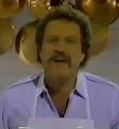
In 1974 Stuttgart, Germany-born chef Friedman (Friedemann) Paul Erhardt (1943-2007) AKA Chef Tell (from playing William Tell in a school play), known for the soundbyte "Very simple, very easy" debuts on TV in Philly on the show "Dialing for Dollars", earning a regular 90-sec. spot on the nat. syndicated TV show "PM Magazine", becoming the first nat. known TV chef in the U.S.; his thick German accent inspires the Swedish Chef in "The Muppet Show"?
In 1974 the Assoc. of Food Journalists is founded in the U.S.

In 1974 the Inst. of Culinary Education (originally Peter Kump's New York Cooking School) is founded in New York City by Peter Kump (1937-95), with teachers incl. James Beard and Julia Child.
On May 24, 1976 the Judgment of Paris (1976 Paris Wine Tasting), a blind taste test in the Paris Inter-Continental Hotel sees Calif. wines beat French wines, causing French judge Odette Kahn to demand her ballot back and diss the results.


In 1976 after babysitting the children of baseball stars Micky Mantle, Yogi Berra et al., making money from modeling, then marrying Yale-educated atty. Andrew Stewart in 1961 (until 1990), Jersey City, N.J.-born Barnard College graduate Martha Helen Stewart (nee Kostyra) (1941-) starts a catering business in her basement in an 1805 farmhouse on Turkey Hill Rd. in Westport, Conn., going on to build a billion-dollar home entertaining empire, starting with the book Entertaining (Dec. 13, 1982) (ghostwritten by Elizabeth Hawes); in 1990 she begins pub. the mag. Martha Stewart Living, which reaches 2M subscribers in 2002; in 1993 she launches a weekly TV program, which becomes a daily program, appearing on CBS-TV's "The Early Show", becoming "the definitive American woman of our time" (New York Mag., May 1995); in Sept. 1997 she founds Martha Stewart Living Omnimedia, which goes public on Oct. 19, 1999, making her the first female self-made billionaire in the U.S.; too bad, on Mar. 5, 2004 she is convicted in federal court of four felony charges regarding a Dec. 27, 2001 insider trading sale of 3,928 shares of ImClone Systems for $45,673, receiving a $30K fine and 5-mo. in prison; on Mar. 15 she resigns from the board of Martha Stewart Living Omnimedia; she ends up serving 5 mo. in Alderson Correctional Facility in W. Va., AKA Camp Cupcake, where she gets the prison nickname M. Diddy and invents the Freedom Poncho, being released on Mar. 4, 2005 and going on to make a comeback, starting with a $2M book deal - a railroad job to keep a good woman down?

In 1977 after co-founding the Moosewood Restaurant in Ithaca, N.Y. in 1973, Rochester, N.Y.-born chef-writer-artist Mollie Katzen (1950-) pub. the bestselling (5M copies) The Moosewood Cookbook, a vegetarian-friendly recipe book, bringing vegetarianism into the mainstream; 2nd ed. 1992. She follows it with the bestsellers The Enchanted Broccoli Forest (1982), Still Life with Menu Cookbook (1988), Vegetable Heaven (Oct. 6, 1997), and Sunlight Cafe (1997), becoming one of the bestselling cookbook authors of all time.
In 1978 the Au Bon Pain (At the Good Bread) fast-food French pastry shop chain is founded in Boston, Mass. by Louis Rapuano and Louis Kane after they acquire French oven manufacturer Pavaillier Machinery, expanding to 230 locations by 2008 incl. Walmart and Macy's.

In 1978 with funding by Hugh Hefner, the monthly mag. Food & Wine (originally The Internat. Review of Food and Wine) is founded in the U.S. by suit-loving Michael Carver Batterberry (1932-2010) and his wife Ariane Batterberry (nee Ruskin) (1935-) as a lower-class alternative to Gourmet and its "truffled pomposity", going on to introduce the dining public to "Perrier, the purple Peruvian potato and Patagonian toothfish" (New York Times) and reach a circ. of 900K a mo. in 1980 when it is sold to Am. Express; in 1983 the mag. begins holding the annual Food & Wine Classic in Aspen, Colo.; in 1988 they found the restaurant-hotel trade journal Food Arts; Michael Batterberry dies on July 28, 2010 after living to see Gourmet mag. fold.

In 1978 The French Laundry restaurant in Yountville, Napa Valley, Calif. is founded by Don and Sally Schmitt in a former steam laundry; in 1992 after studying under Am. chef Roland G. Henin, Oceanside, Calif.-born chef Thomas Keller (1955-) buys it and becomes head chef, going on to receive three Michelin stars in 2005, with Am. chef Anthony Bourdain calling it "the best restaurant in the world, period"; on Nov. 1, 1999 Keller pub. The French Laundry Cookbook.
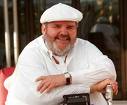
In 1979 Opelousas, La.-born Cajun chef Paul "Lean Gene Autry" Prudomme (1940-2015) opens K-Paul Louisiana Kitchen on Chartres St. in New Orleans, going on to introduce blackened redfish, creating a craze that depletes Gulf stocks, causing a moratorium to be declared.

In 1979 Comme Chez Soi (Just Like Home) restaurant in Brussels, Belgian (founded in 1926), run by Belgian chef Pierre Wynants (1939-) achieves three Michelin stars (until 2006); in 2005 his Ostend Queen restaurant receives a good Michelin review although it had not yet opened, causing a firestorm of controversy, after which all 50K copies are recalled.

In 1981 S Austrian-born Wolfgang Johannes Puck (Topfschnig) (1949-) pub. his first cookbook Modern French Cooking for the American Kitchen, making him a celeb and helping him open the Spago Restaurant on Sunset Strip in Los Angeles, Calif. in 1982, followed in 1997 by another in Beverly Hills.
In 1982 Ciabatta white bread is created by a baker in Adria, Veneto, Italy as a clone of a French baguette; a toasted sandwich made with it is called a panino.


In 1982 Ken Hom's Chinese Cookery debuts on BBC-TV (until ?), starring Tucson, Ariz.-born Chinese chef Ken Hom (1949-), followed by Noodle Road on KBS-TV in 2008, and Exploring China: A Culinary Adventure on BBC-TV in 2012 with Taiwan-born chef Ching He Huang (1978-). He goes on to sell 1.5M cookbooks and 7M woks; in 1997 he moves to SW France.
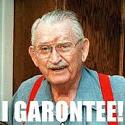
In 1982 after a career as a safety engineer and comedian, followed by chef and cookbook author, incl. a local TV cooking show in 1971, Roseland, La.-born Cajun chef Justin E. Wilson (1914-2001) begins hosting Louisiana Cookin' on PBS-TV (until ?), featuring his catchphrase "I gar-on-tee!" along with plenty of hot cayenne pepper and "ony-on" in each dish, accompanied by plenty of Cajun stories. In 1965 he pub. The Justin Wilson Cook Book, followed by The Justin Wilson #2 Cookbook: Cookin' Cajun (1978), The Justin Wilson Gourmet and Gourmand Cookbook (1984), Justin Wilson's Outdoor Cooking with Inside Help (1986), Justin Wilson Looking Back: A Cajun Cookbook (1997), and Justin Wilson's Easy Cookin': 150 Rib-Tickling Recipes for Good Eating (1998).

In 1982 Yan Can Cook debuts on PBS-TV (until ?), hosted by Canton, China-born Am. chef Martin Yan (1948-).
In 1983 Great Chefs of New Orleans airs on PBS-TV, first in the Great Chefs series about Am. chefs, filmed in their kitchens; in the late 1980s it switches to Discovery Channel, which produces Great Chefs of America, and Great Chefs of the World.

In 1984 the French Culinary Inst. is founded in New York City by Dorothy Cann Hamilton, gaining support from Julia Child and expanding to San Francisco and Italy, changing its name to Internat. Culinary Center.
In 1984 the Guild of Food Writers is founded in London, England, growing to 390 members.

In 1986 Orthez, France-born chef (student of Roger Verge) Alain Ducasse (1956-) becomes head chef at the Hotel de Paris in Monte Carlo, expanding and becoming the first chef to own Michelin 3-star restaurants in three cities.


In 1986 Euro-Toques (European Community of Cooks) is founded by Brussels-born Belgian chef Baron Pierre Romeyer (Romeijer) (1930-) of 3-star Le Maison de Bouche to promote the principles of fine cooking; the Irish branch is founded by County Cork-born Myrtle Allen (nee Hill) (1924-), who goes on to become the Alice Waters of Irish cooking.

In Jan. 1987 the first biennial Bocuse d'Or cooking competition at the SIRHA Internat. Hotel, Catering and Food Trade Exhibition, hosted by French chef Paul Bocuse (1926-) is held in Lyon, France, becoming the culinary Olympics along with the quadrennial Internat. Exhibition of Culinary Art in Germany.

On Aug. 28, 1987 Gabriel Axel's Babette's Feast debuts, based on a story by Isak Dinesen, starring Stephane Audran as cook Babette Hersant, who wins a 10K franc lottery and uses it to prepare a "real French dinner" for 12; "Now you will be poor the rest of your life"; "An artist is never poor."

In 1987 Leeds, England-born chef Marco Pierre White (1961-) opens Harvey's in Wandsworth Common, London (until 1993), receiving two Michelin stars by 1988, going on to open the Restaurant Marco Pierre White in Hyde Park Hotel, becoming the first British chef to be awarded three Michelin stars in 1993 (Roux Brothers, Pierre Koffman), and the first British celebrity chef ("the Godfather of Modern Cooking"), training chefs incl. Mario Batali, Gordon Ramsay, and Curtis Stone; in 1999 he returns the stars, with the soundbyte: "I was being judged by people who had less knowledge than me, so what was it truly worth? I gave Michelin inspectors too much respect, and I belittled myself. I had three options: I could be a prisoner of my world and continue to work six days a week, I could live a lie and charge high prices and not be behind the stove or I could give my stars back, spend time with my children and re-invent myself."

On Sept. 11, 1989 Peter Greenaway's The Cook, the Thief, His Wife & Her Lover (Miramax Films), about the upscale gangster-run Le Hollandais Restaurant in England stars Richard Bohringer as the Cook, Michael Gambon as the Thief, Helen Mirren as the Wife, and Alan Howard as the Lover, shocking audiences with violence, nudity, bathroom humor, and cannibalism; does $7.7M box office on a ? budget.

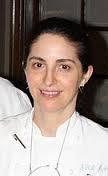
In 1989 after training to take over his family's Arzak Restaurant in San Sebastian in N Spain, Juan Mari Arzak Arratibel (1942-), creator of the New Basque Cuisine receives three Michelin stars; he goes on to train his daughter Elena Arzak (1969-) to work alongside him, and in 2012 she is named best female chef in the world.
In 1989 Ciao Italia with Mary Ann Esposito debuts on PBS-TV (until ?), starring Buffalo, N.Y.-born chef Mary Ann Esposito (1942-).

In 1989 after championing a movement away from the excesses of nouvelle cuisine, Poitiers-born French chef Joel (Joël) Robuchon (1945-) is awarded the title of Chef of the Century by Gault et Millau, retiring at age 50.
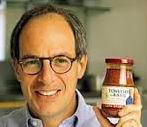
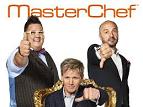
On July 2, 1990 MasterChef debuts on BBC-TV (until July 3, 2001), then again on Feb. 21, 2005 (until ?), hosted by Marblehead, Mass.-born gastronome Loyd Daniel Gilman Grossman (1950-), featuring amateur cooks vying to cook the best 3-course meal in 2 hours; it spawns MasterChef: The Professionals (Aug. 25, 2008-), Celebrity MasterChef (2006-), Junior MasterChef (Aug. 14, 1999-Aug. 1, 1999, May 20, 2010-), MasterChef Australia (Apr. 27, 2009-) et al. On July 27, 2010 Master Chef debuts on Fox-TV, starring chef-judges Gordon James Ramsay Jr. (1966-), Joseph "Joe" Bastianich (1968-), and Chicago, Ill.-based Graham Elliot (Bowles) (1977-), who loves to wear square white eyeglasses; in season 6 Christina Tosi replaces Joe Bastianich; on Sept. 27, 2013 MasterChef Junior debuts on Fox-TV (until ?), starring the same three original chef-judges; watch video.

On Jan. 15, 1991 New York City-born chef (French Culinary Inst. grad) Robert William "Bobby" Flay (1964-) opens the Mesa Grill in New York City, going on to expand his restaurant empire and appear on Food Network and Cooking Channel, getting into a TV feud with Iron Chef Masaharu Morimoto on Iron Chef America in 2000 that increases his popularity.

In 1991 after being fired from El Bulli restaurant in Barcelona, Mieres, Asturias, Spain-born Jose Andres (José Ramón Andrés Puerta) (1969-) moves to the U.S., ending up in 1993 at Jaleo restaurant in Washington, D.C, where he popularizes tapas (bocas), starring in his own cooking show "Vamos a Cocinar" in 2005.

In 1991 after divorcing her hubby Jimmy Deen in 1989, Albany, Ga.-born Southern chef Paula Ann Hiers Deen (1947-) opens The Lady & Sons Restaurant in Savannah, Ga., getting named "International Meal of the Year" by USA Today in 1999; in 1997 she self-pub. The Lady & Sons Country Cooking, launching her celeb chef career; in Nov. 2002 Paula's Home Cooking debuts on Food Network (until ?); too bad, on June 21, 2013 she admits to having used racial slurs sometime in the past, causing the PC police to come out and get Food Network to not renew her contract, causing her on Sept. 24, 2014 to announce her own network; meanwhile after several cos. cancel endorsement contracts, ex-pres. Jimmy Carter urges the public to forgive her, with the soundbyte: "I think she has been punished, perhaps overly severely, for her honesty"; in Nov. 2005 she launches the mag. Cooking with Paula Deen, which reaches 7.5M circ. in Mar. 2009; in Apr. 2007 she pub. her memoir It Ain't All About the Cookin'; in 2009 she and Martha Nesbit pub. Cookbook for the Lunch-Box Set, which gets dissed by Barbara Walters, Anthony Bourdain et al. for its pushing of high fat, salt, and sugar on children; in 2009 she is diagnosed with Type 2 diabetes, covering it up until Jan. 17, 2012, drawing more criticism for being a paid spokesperson for the Danish pharmaceutical co. Novo Nordisk, an insulin manufacturer.

On Oct. 10, 1993 Fuji Television's well-edited TV gourmet cooking show Iron Chef debuts in Japan for 309 episodes (until Sept. 24, 1999), featuring guest chefs battling resident Iron Chefs from the Gourmet Academy in a timed cooking battle in Kitchen Stadium built around a theme ingredient; the host is flamboyant cape-wearing Chairman Takeshi Kaga, known for the soundbytes "If memory serves me right" (from Arthur Rimbaud), and "Allez cuisine!" (Go cook!); Iron Chefs incl. Chen Kenichi (1956-), Yutaka Ishinabe (1948-), Hiroyuki Sakai (1942-), Masahiko Kobe (1969-), Rokusaburo Michiba (1931-), Koumei Nakamura (1947-), and Masaharu Morimoto (1955-); the show becomes a campy cult hit in the U.S. on Food Network, spawning Iron Chef America (2004), Iron Chef Indonesia (2003-6), Iron Chef UK (2010), Iron Chef Australia (2010), Iron Chef Thailand (2012), and Iron Chef Vietnam (2012).


In 1993 after emigrating to the U.S. in 1958 and working at a bakery owned by actor Christopher Walken's father, then opening Buonavia (It. "good road") Restaurant in Forest Hills, Queens, N.Y. in 1971, followed by Villa Secondo in Queens, Pola, Italy (Croatia)-born chef Lidia Bastianich (1947-) and her Astoria, Queens, N.Y.-born son Joseph "Joe" Bastianich (1968-) open Becco (It. "peck, nibble, savor") Restaurant in Manhattan, N.Y., which becomes a hit, spawning new restarants in Kansas City, Mo. and Pittsburgh, Penn. In 1993 Lidia tapes an episode of Julia Child: Cooking With Master Chefs on PBS-TV. In 1998 Lidia's Italian-American Kitchen debuts on PBS-TV (until ?). In June 1998 Joe partners with Mario Batali to open Babbo Ristorante e Enoteca, which becomes the first Italian restaurant to be awarded three stars by The New York Times in 40 years, going on to open seven more restaurants in New York City.

On Nov. 16, 1994 Fall River, Mass.-born chef Emeril John Lagasse (1959-) begins hosting the Food Network show Essence of Emril (until 2007), which promotes New New Orleans style cooking, becoming known for the trademark phrases "Bam!" and "Kick it up a notch"; in 1997 he begins hosting the Food Network show Emeril Live, which moves to Fine Living Channel in 2008-10.

In 1995 London-born English chef Heston Marc Blumenthal (1966-) opens the Fat Duck Restaurant in Berkshire, England, which receives its first Michelin star in 1999, going on to become a pioneer in Molecular Gastronomy (term coined in 1988 by Oxford physicist Nicholas Kurti and French chemist Herve This), incl. foodpairing, flavor encapsulation, and multi-sensory cooking, with signature dishes incl. Triple-Cooked Chips, Soft-Centered Scotch Eggs, and Bacon-and-Egg Ice Cream.

On Jan. 24, 1996 Campbell Scott's and Stanley Tucci's Big Night (Samuel Goldwyn Co.) debuts, starring Tony Shalhoub and Stanley Tucci as brothers Primo and Secondo from Abruzzo, Italy, who operate the Paradise Restaurant on the N.J. Shore in the 1950s, and struggle under the watered-down expectations of Yankee customers; Minnie Driver plays Secondo's girl Phyllis; Isabella Rossellini plays Gabriella, wife of competitor Pascal (Ian Holm) of Pascal's Restaurant, who arranges for celeb singer Louis Prima to dine at Paradise for one big night, causing the brothers to overspend, only to find out that it was a set-up to force them to work for Pascal; does $12M box office on a $4.1M budget.

In 1996 Molto Mario debuts on Food Network (until 2004), starring Seattle, Wash.-born Italian chef Mario Francesco Batali (1960-), who likes to wear shorts and orange Crocs.

In 1998 Wandsworth, London, England-born former freelance journalist Nigella Lucy Lawson (1960-) pub. her first cookbook How to Eat: The Pleasures and Principles of Good Food, which becomes a bestseller (300K copies). In 1999 she begins hosting her own cooking show Nigella Bites on BBC-TV (until 1999). In 2000 she pub. the bestseller How to Be a Domestic Goddess. In 2006 she begins hosting Nigella Feasts on Food Network (until 2006), going on to sell 3M cookbooks.

In 1998 Scottish-born British chef (pupil of Guy Savoy and Marco Pierre White) Gordon James Ramsay Jr. (1966-) opens Restaurant Gordon Ramsay in London, which gains its 3rd Michelin star in 2001 (first Scot). On May 30, 2005 the reality TV competition show Hell's Kitchen debuts on Fox-TV for ? episodes (until ?), featuring enfant terrible Ramsay lording it over novice chefs in order to make them attain impeccable standards, with the winner becoming head chef of a fine U.S. restaurant.

On Mar. 18, 1999 Escape to River Cottage debuts on BBC-TV for six episodes (until Apr. 22), starring Hampstead, London-born back-to-basics chef Hugh Christopher Edmund Fearnley-Whittingstall (1965-), who lives in a former gamekeeper's lodge in Netherbury, Dorset and eats only local produce; he follows with "Treats from the Edwardian Country House" (6 episodes) (2002), "Beyond River Cottage" (10 episodes) (2004), "The View from River Cottage" (2005), "The River Cottage Treatment" (2006), "River Cottage: Gone Fishing" (2007), "River Cottage Spring" (2008), "River Cottage Autumn" (2008), "River Cottage: Winter's on the Way" (2009), "River Cottage Everyday" (2010), "River Cottage: Veg Every Day" (2011), and "River Cottage: Three Good Things" (2012).

On Apr. 14, 1999 The Naked Chef debuts on BBC-TV for 25 episodes (until Dec. 19, 2001), starring Clavering, Essex, England-born chef James Trevor "Jamie" Oliver (1975-), known for his Mockney dialect and relaxed style, turning men onto cooking, getting an invite to prepare lunch for PM Tony Blair; he becomes known for driving his scooter around London gathering food to cook; in 2002 Oliver's Twist debuts on Food Network (until ?), making him an internat. star.

On July 7, 1999 Good Eats debuts on Food Network for 249 episodes, switching to Cooking Channel in 2011 (until Feb. 10, 2012), a combo of Julia Child, Mr. Wizard, and Monty Python, starring Los Angeles, Calif.-born Alton Crawford Brown (1962-), who despises "unitaskers" (garlic presses, margarita machines) and loves Dutch angles.

In Aug. 2000 New York City-born chef (Culinary Inst. of Am. graduate) Anthony Michael Bourdain (1956-2018) pub. the NYT bestseller Kitchen Confidential: Adventures in the Culinary Underbelly, making him a celeb.; he follows with the NYT bestseller A Cook's Tour: In Search of the Perfect Meal (Global Adventures in Extreme Cuisines) (2001), The Nasty Bits: Collected Varietal Cuts, Usable Trim, Scraps, and Bones (May 16, 2006), No Reservations: Around the World on an Empty Stomach (Oct. 30, 2007), and Medium Raw: A Bloody Valentine to the World of Food and the People Who Cook (June 8, 2010), which criticizes fellow TV chefs as having never worked in a real restaurant. In 2001 A Cook's Tour debuts on Food Network for 35 episodes (until 2002). On July 25, 2005 Anthony Bourdain: No Reservations debuts on Travel Channel for 142 episodes (until Nov. 5, 2012). On Sept. 19, 2005 the TV sitcom Kitchen Confidential debuts on Fox Network for 13 episodes (until Dec. 5, 2005), starring Bradley Cooper as chef Jack Bourdain. In July 2006 Bourdain is caught in Beirut when the Israel-Lebanon Conflict breaks out, holing-up in a hotel until cleaner "Mr. Wolf" helps the U.S. Marines evacuate him and his crew on July 20, resulting in a No Reservations episode that airs on Aug. 21 and is nominated for an Emmy. Too bad, he commits suicide on June 8, 2018 in Strasbourg, France.
On Oct. 9, 2000 the cable TV Food Network, owned by Shaw Media and Scripps Networks Interactive, based in Toronto, Canada debuts (until ?).

In fall 2001 30 Minute Meals debuts on Food Network for ? episodes (until ?), starring Glens Falls, N.Y.-born Rachael Domenica Ray (Scuderi-Ray) (1968-), who opens each show with the soundbyte: "Hi there, I'm Rachael Ray and I make 30-minute meals. Now that means in the time it takes you to watch this program, I will have made a delicious and healthy meal from start to finish." On Apr. 1, 2002 $40 a Day debuts on Food Network (until Dec. 12, 2005). On Aug. 26, 2005 Rachael Ray's Tasty Travels debuts on Food Network (until ?). On Oct. 25, 2005 Reader's Digest launches the mag. Every Day with Rachael Ray, which is purchased by Meredith Corp. in 2011. On Sept. 18, 2006 the syndicated daytime talk-cooking TV show The Rachael Ray Show debuts (until ?), featuring her easy-to=cook 30-min. meals, popularizing the term "EVOO" (extra-virgin olive oil), along with the phrase "Oh my gravy!"; on Nov. 12, 2006 she and Mario Batali defeat Bobby Flay and Giada De Laurenttis on Iron Chef America (secret ingredient: cranberries). On Jan. 12, 2008 Rachael's Vacation debuts on Food Network (until ?). In Jan. 2010 Rachael vs. Guy: Celebrity Cook-Off debuts, co-starring Guy Fieri. In Sept. 2010 Rachael Ray's Week In A Day debuts on Cooking Channel (until ?).

In 2001 Season by Season debuts on PBS-TV, starring Red Bluff, Calif.-born chef (Culinary Inst. of Am. graduate) Michael Chiarello (1962-). In 2003 Easy Entertaining with Michael Chiarello debuts on Food Network, followed in 2004 by NapaStyle on Fine Living Network (until ?).
On Aug. 21, 2002 the cable TV Fine Living Network, owned by Scripps Network Interactive debuts (until May 31 2010), based in Los Angeles, Calif., moving in 2005 to Knoxville, Tenn. On May 31, 2010 the cable TV Cooking Channel, owned by Scripps Networks Interactive debuts, based in Knoxville, Tenn., replacing Fine Living Network.
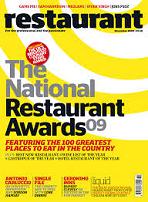


In 2002 Restaurant mag. is founded in the U.K. by William Reed Business Media (until ?), reaching a circ. of 16.6K in 2011-12, becoming known for its annual World's 50 Best Restaurants list, based on the votes of 837 experts; the top restaurant (2002-6, 2009) is elBulli (French bulldogs) in Roses, Catalonia, Spain (founded 1961; closes on July 30, 2011), followed by in 2010-11, 2012, 2014 by Noma (Danish "nordisk" + "mad" = Nordic food) in Copenhagen, Denmark, founded in 2003 by Copenhagen-born chef Rene (René) Redzepi (1977-) and Nykobing Falster-born chef Claus Meyer (1963-), who together in 2004 found New Nordic (Danish) Cuisine.

On Apr. 5, 2003 Everyday Italian debuts on Food Network (until ?), starring Rome, Italy-born Am. chef (Le Cordon Bleu graduate) Giada (It. "jade") Pamela De Laurentiis (1970-), daughter of actress Veronica De Laurentiis and maternal granddaughter of producer Dino De Laurentiis. In Nov. 2006 she and Bobby Flay lose an Iron Chef America contest to Rachael Ray and Mario Batali. On Oct. 18, 2008 Giada at Home debuts on Food Network (until ?). In July 2014 she opens her first restaurant GIADA, located in The Cromwell in Las Vegas, Nev.
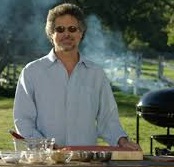
In 2003 Nagoya, Japan-born Am. chef Steven Raichlen (1953-), author of The Barbecue Bible (1998) debuts his TV series Barbecue University on PBS-TV (until 2006).

In Jan. 2005 Jackson, Miss.-born chef (Culinary Inst. of Am. graduate) Catherine Ann "Cat" Cora (1967-) co-founds Chefs for Humanity "to quickly be able to raise funds and provide resources for important emergency and humanitarian aid, nutritional education, and hunger-related initiatves throughout the world." On May 9, 2012 Around the World in 80 Plates debuts on Bravo-TV (until July 18, 2012), following 12 chefs racing across 10 countries in 44 days, hosted by chefs Curtis Stone and Cat Cora.

On June 5, 2005 Food Network Star, hosted by Indianapolis, Ind.-born Marc Summers (Berkowitz) (1951-) debuts on Food Network (until ?), giving unknowns a chance to host their own cooking show; judges incl. Alton Brown, Bobby Flay, and Giada De Laurentiis; in 2011 it becomes "The Next Food Network Star".
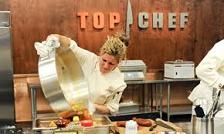



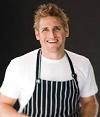
On Mar. 8, 2006 the reality TV show Top Chef debuts on Bravo (until ?), with judges incl. Elizabeth, N.J.-born chef (head judge) Thomas Patrick "Tom" Colicchio (1962-) (known for his Gramercy Tavern in Manhattan, N.Y., opened in July 1994 and named most popular restaurant in New York City in 2003 and 2005), Emeril Lagasse, Wolfgang Puck, and Anthony Bourdain, spawning spinoffs "Top Chefs: Master", and "Top Chef: Just Desserts"; in 2007-10 Am. chef Lee Anne Wong becomes the culinary producer of "Top Chef", hosting the Webcast "Top Recipe: The Wong Way to Cook". On June 10, 2009 Top Chef: Masters debuts on Bravo-TV (until ?), produced by Tom Colicchio and hosted by South Korean-born Kelly Choi (1976-) and Australian-born chef Curtis Stone (1975-); winners incl. Oklahoma City, Okla.-born Rick Bayless (1953-) (season 1), Ethiopian-born chef Marcus "Joar" Samuelsson (Kassahun Tsegie) (1970-) (season 2), Am. chef Floyd Cardoz (season 3), and R.I.-born chef (known for loving to cook offal) Chris Cosentino (season 4).

On Apr. 10, 2006 Great British Menu debuts on BBC-TV for ? episodes (until ?); the first series cooks the birthday meal for Queen Elizabeth I on June 16 for 300 people; Irish chef Richard Corrigan (1964-) goes on to win 3x.
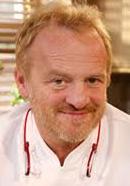
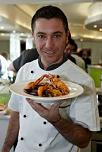
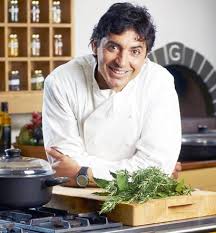

On June 10, 2006 ...Cooks! debuts on ITV for 167 episodes (until May 21, 2010), hosted by Stratford-upon-Avon, Warwickshire, England-born chef Henry Antony Cardew Worrall Thompson (1951-), with regular chefs incl. Torre del Greco, Italy-born Gennaro "Gino" D'Acampo (1976-), Arras, France-born Jean-Christophe Novelli (1961-), and Halifax, West Riding of Yorkshire, England-born Brian Turner (1946-).
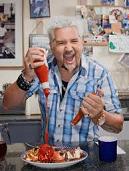
On June 25, 2006 after he wins season 2 of The Next Food Network Star on Apr. 23, Guy's Big Bite debuts on Food Network (until ?), starring Columbus, Ohio-born Guy Fieri (Guy Ramsay Ferry) (1968-); by mid-2010 he becomes the face of Food Network, attracting male viewers. On Apr. 23, 2007 Diners, Drive-Ins and Dives debuts on Foot Network (until ?). On Feb. 17, 2008 Ultimate Recipe Showdown debuts on Food Network (until 2011), co-hosted by Marc Summers. On Sept. 14, 2008 Guy Off the Hook debuts on Food Network (until Oct. 19, 2008). On Jan. 1, 2012 Rachael vs. Guy: Celebrity Cook-Off debuts on Food Network (until ?), co-starring Rachael Ray. On Oct. 20, 2013 Guy's Grocery Games (Triple G) debuts on Food Network (until ?).
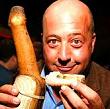
On Nov. 1, 2006 Bizarre Foods with Andrew Zimmern debuts on the Travel Channel (until ?), starring New York City-born Minneapolis, Minn.-based chef Andrew Scott Zimmern (1961-), who plays the circus geek, traveling around the world and chowing down on foods that would gross a cat off a gut wagon, always with a serious look.
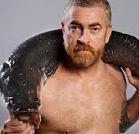
In 2006 D.O.M. restaurant in Sao Paulo, Brazil, run by Brazilian chef Alex Atala (1968-), known for using exotic local ingredients is named best restaurant in South Am. by Restaurant mag.; in May 2012 it reaches #4 on their World's Best 50 Restaurants list.

On Jan. 24, 2007 Dinner: Impossible debuts on Food Network for 83 episodes (until May 24, 2011), hosted by Salisbury, England-born chef Robert P. Irvine (1965-), known for wearing black T-shirts and chef's jackets with the inscription "Sub sole, sub umbra, virens" (Flourishing in both sunshine and shade); too bad, in 2008 "embellishments and inaccuracies" in his resume come to light, causing him to be replaced by Michael Symon for 10 episodes until they change their minds. On Jan. 19, 2011 Restaurant: Impossible debuts on Food Network, produced by Marc Summers, starring Robert Irvine, who restores failing Am. restaurants on a $10K budget.

On June 22, 2007 Brad Bird's Ratatouille debuts, an animated Pixar movie about Remy the chef rat (Patton Oswalt) taking off from Granny Farmer's and heading to Paris, where he works at Gusteau's with human chefs Skinner (Ian Holm) and Linguini (Lou Romano), proving his delicate nose; #11 movie of 2007 ($206M U.S. and $623.7M worldwide box office on a $150M budget).

On Oct. 14, 2007 after she wins season #3 of "Food Network Star" (first female winner), The Gourmet Next Door debuts on Food Network for six episodes (until Dec. 23, 2007), hosted by San Diego, Calif.-born chef (Ecole Gregoire-Ferrandi graduate) Amy Finley (1973-); too bad, she bugs out to save her failing marriage and moves with her hubby and children to a farm in Burgundy, France, chronicling it in her memoir How to Eat a Small Country (Apr. 2011), which tells how they toured around France looking for nearly-lost dishes incl. tete de veau, boiled baby cow face.


On June 29, 2008 Secrets of a Restaurant Chef debuts on Food Network (until ?), starring Cazenovia, N.Y.-born chef Anne W. Burrell (1969-2025). On Jan. 3, 2010 Worst Cooks in America debuts on Food Network for 119 episodes(until Apr. 1, 2012), hosted by Burrell. In 2012 she is outed by Ted Allen, and on Dec. 31 she announces her engagement to fellow chef Koren Grieveson (1971-), then switches positions and announces her engagement to Stuart Claxton on Apr. 21, 2020, marrying on Oct. 16, 2021.


On Jan. 13, 2009 Chopped debuts on Food Network (until ?), hosted by Columbus, Ohio-born gourmand Ted Allen (1965-) (food-wine specialist on "Queer Eye for the Straight Guy in 2003-7), pitting four chefs against each other for a $10K prize; judges incl. Am. New York Times food critic Mark Bittman (1950-), Worcester, Mass.-born chef Geoffrey Zakarian (1959-), Am. chef Jody Williams (1963-), Paramus, N.J.-born chef Ken Oringer (1965-), Am. chef Marc Murphy (1969-), Waterbury, Conn.-born chef Scott Conant (1971-), Washington, D.C.-born chef Missy Robbins (1971-), Fall River, Mass.-born chef Chris Santos (1971-), Cedar Grove, N.J.-born chef Amanda Freitag (1972-), New York City-born chef Alexandra "Alex" Guarnaschelli (1972), Punjab-born chef Maneet Chauhan (1976-), Am. chef Sue Torres (1973-), El Paso, Tex.-born chef Aaron Sanchez (Aarón Sánchez) (1976-), and Israel-born chef Ron Ben-Israel. On June 22, 2009 The Best Thing I Ever Ate debuts on Food Network (until ?), hosted by Ted Allen, featuring guest celebs.

On Aug. 7, 2009 Nora Ephron's Julie & Julia (Columbia Pictures) debuts, based on the book by Julie Powell, starring Meryl Streep as "bon appetit" Am. French chef Julia Child, and Amy Adams as govt. secy. Julie Powell, who decides to cook all 524 of her recipes in 365 days and blog about it; Stanley Tucci plays Julia's hubby Paul, and Chris Messina plays Julie's hubby Eric; does $129.5M box office on a $40M budget.

In Aug. 2009 Tucson, Ariz.-born Melissa Donovan d'Arabian (1968-) wins season #5 of "Food Network Star", going on to host Ten Dollar Dinners with Melissa on Food Network (until ?).

On Sept. 26, 2011 the food and lifestyle TV talk show The Chew debuts on ABC-TV (until ?), replacing the soap opera All My Children, hosted by chefs Mario Francesco Batali (1960-), Michael D. Symon (1969-), and Carla Hall (1964-), along with fashion consultant Clinton Kelly (1969-) and nutrition consultant Daphne Oz (1986-).
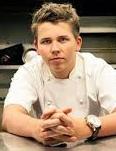
In Feb. 2012 18-y.-o. Welsh-born British chef Luke Thomas (1993-) becomes the youngest head chef in the U.K., taking over Sanctum on the Green in Cookham, which is filmed by the BBC for Britain's Youngest Chef.
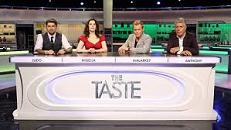
On Jan. 22, 2013 the reality competition TV show The Taste debuts on ABC-TV for ? episodes (until ?), featuring amateur and prof. chefs; judges incl. Anthony Michael Bourdain (1956-2018), Nigella Lucy Lawson (1960-), Ludovic "Ludo" Lefebvre (1971-), and Marcus "Joar" Samuelsson (Kassahun Tsegie) (1970-).

On Sept. 7, 2013 A Chef's Life debuts on PBS (until ?), starring Deep Run, N.C.-born chef Vivian Howard and her husband Ben Knight of Chef & The Farmer Restaurant in Kinston, N.C.

On Aug. 8, 2014 Lasse Hallstrom's The Hundred-Foot Journey (Touchstone Pictures) debuts, based on the 2010 novel by Richard C. Morais about feuding restaurants located 100 ft. apart, starring Helen Mirren as French restaurant owner Madame Mallory, Om Puri as rival Indian restaurant owner Papa, Manish Dayal as Chef Hassan Haji, and Charlotte Le Bon as Chef Marguerite; does $88.9M box office on a $22M budget.
In Aug. 2016 Chan Hon Meng (1965-) of Singapore becomes the first proprietor of a street food stall to win a Michelin star.